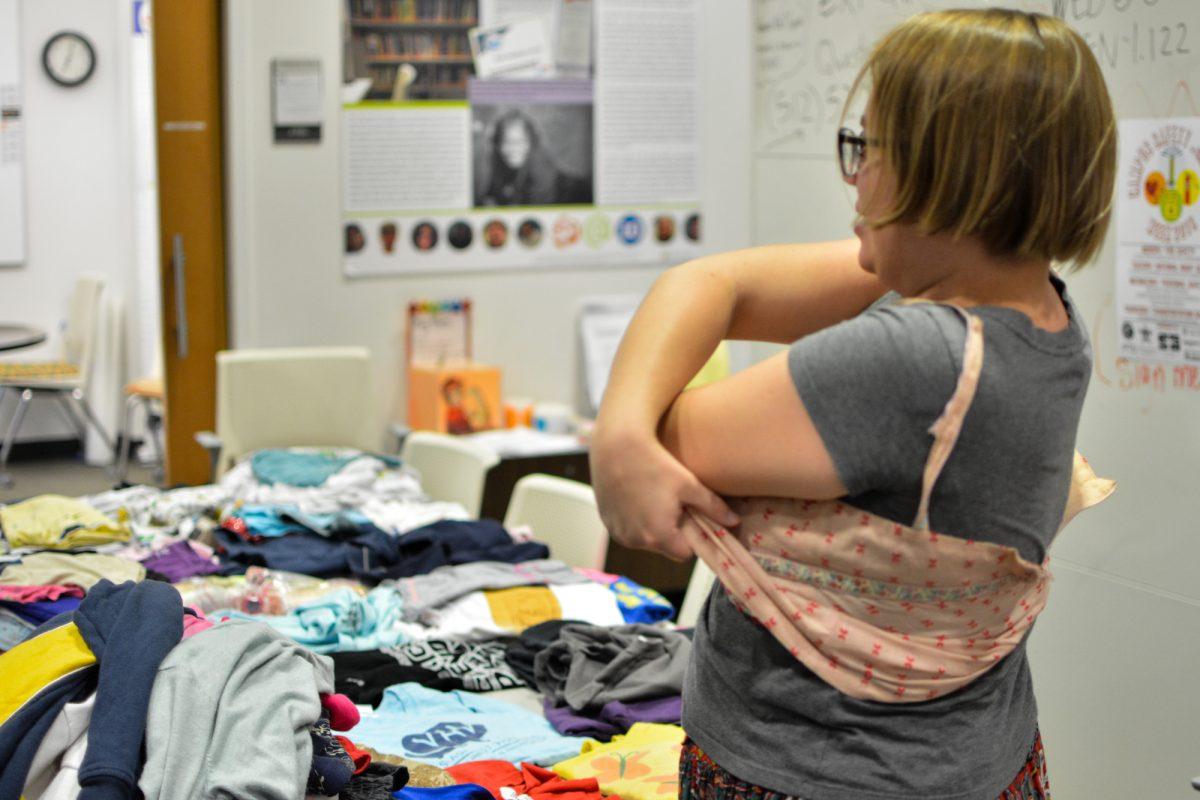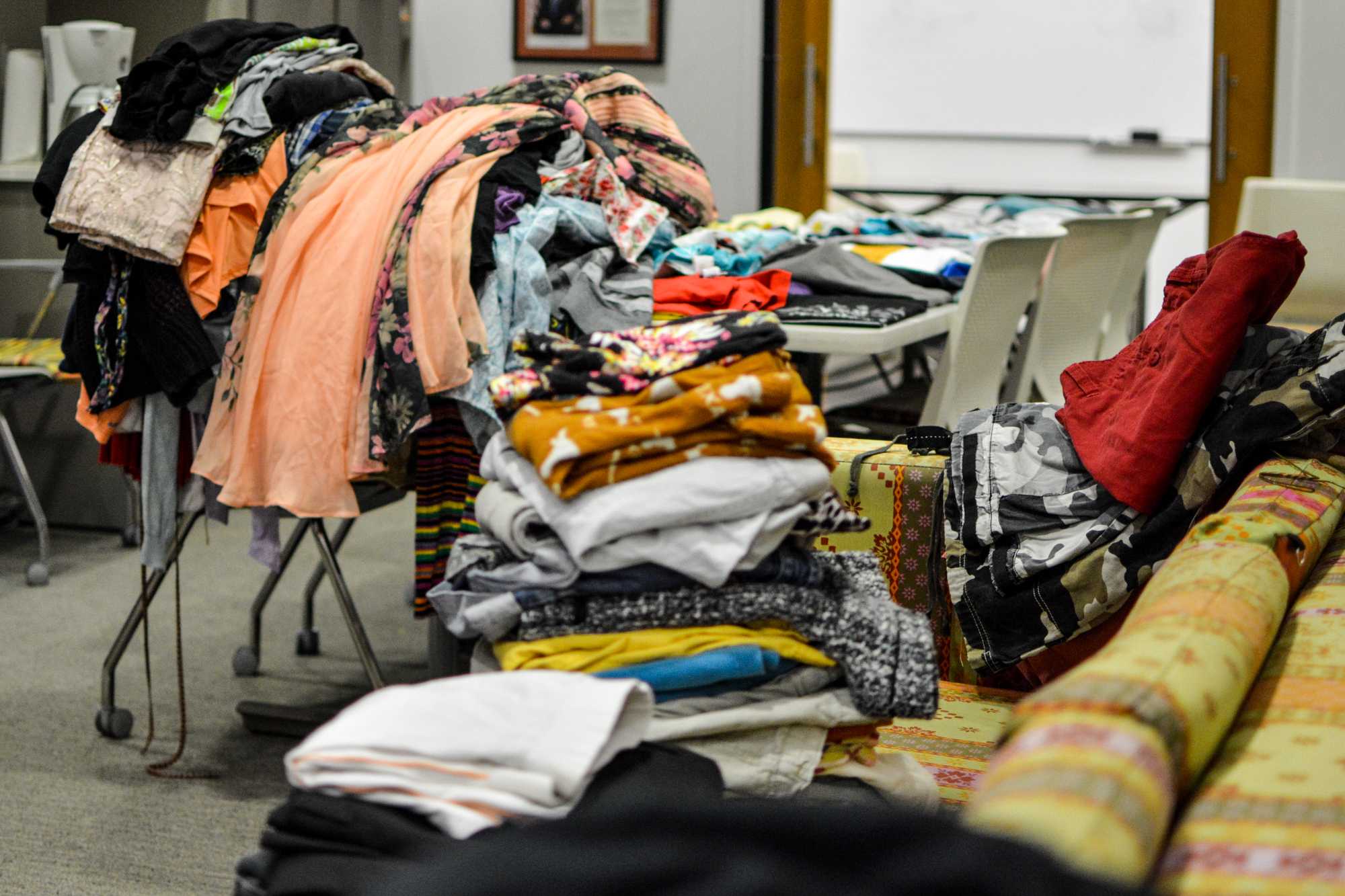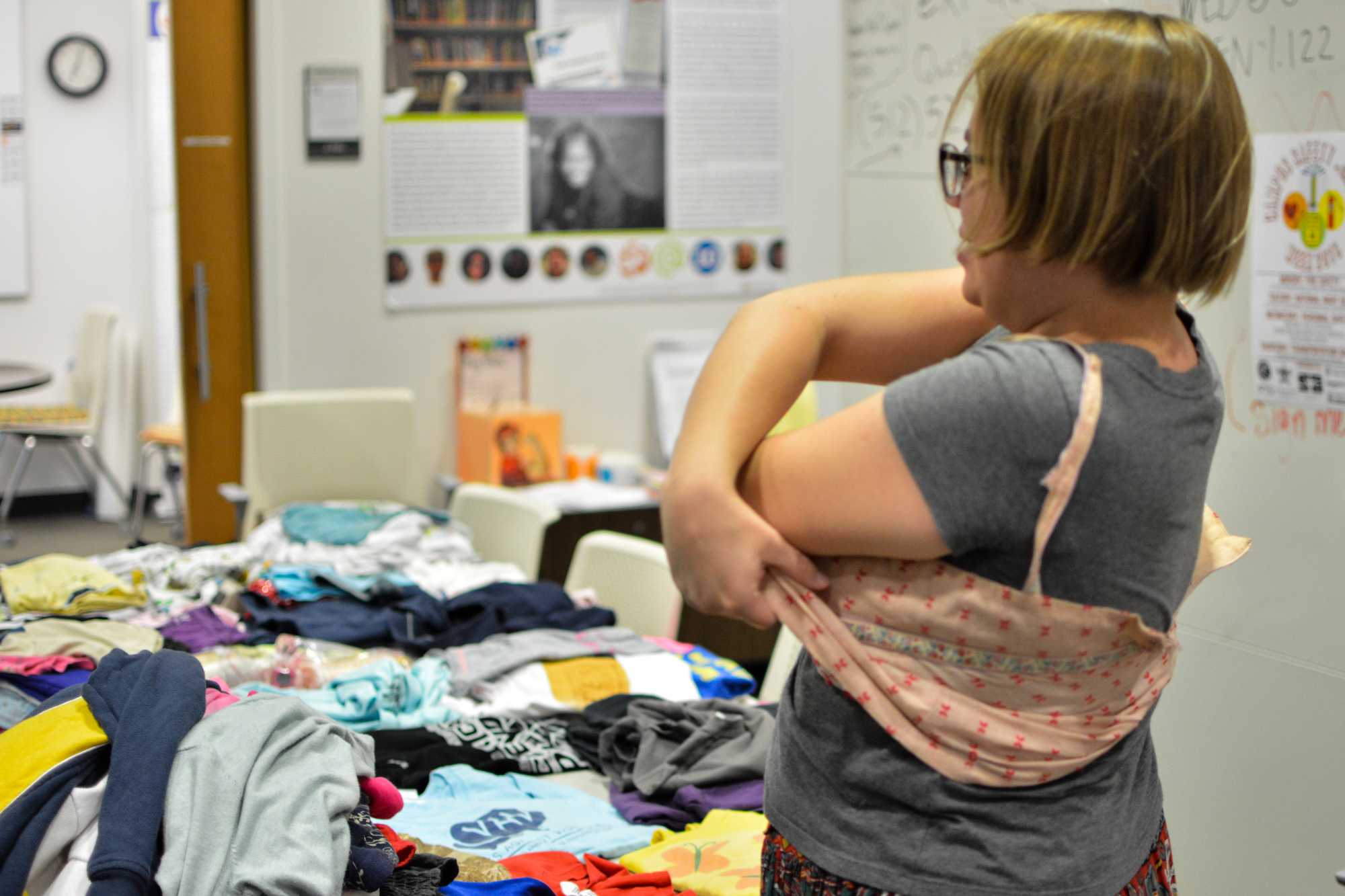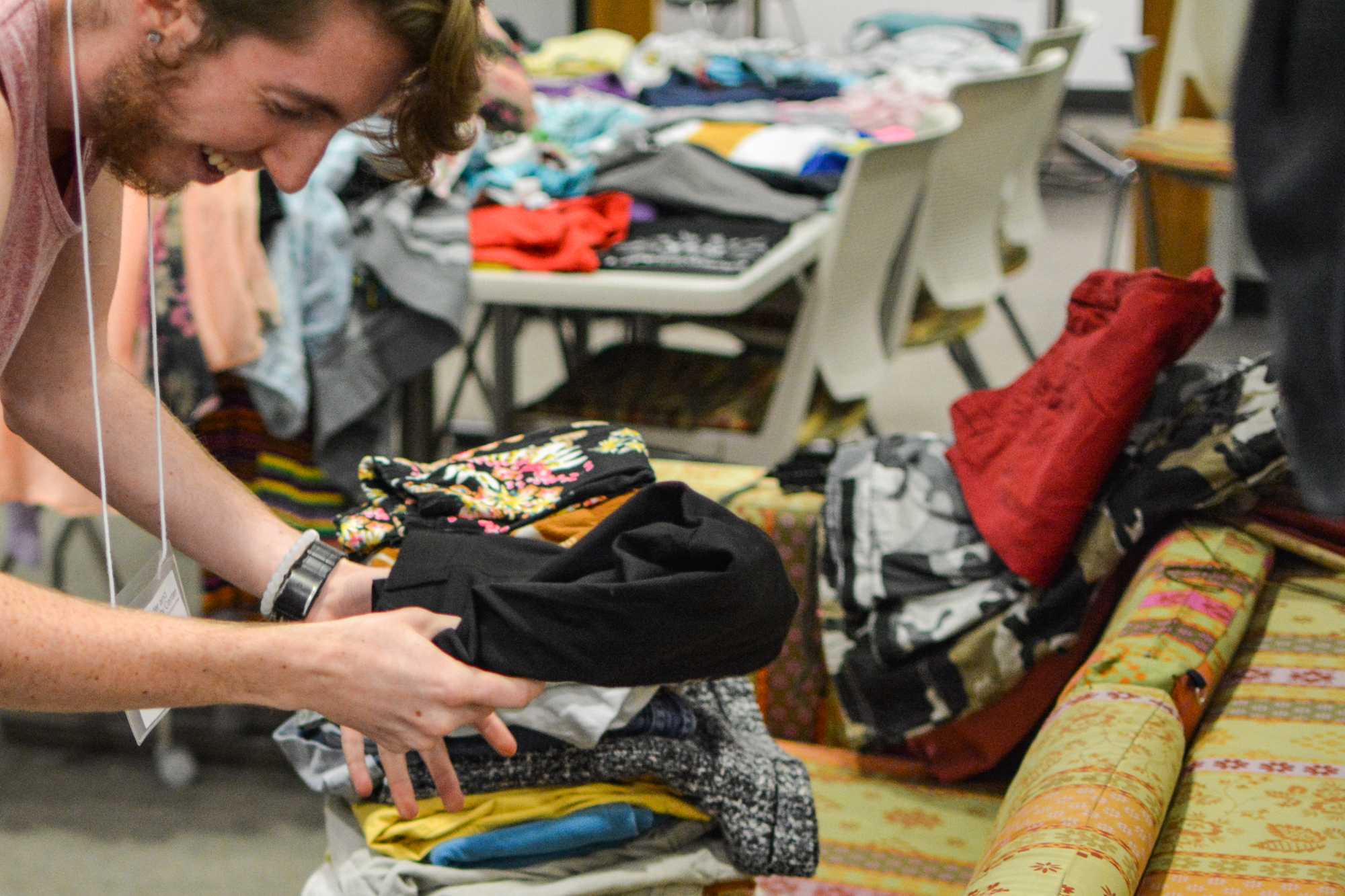Piles of leftover clothes from the swap are donated to those in need.
The Gender and Sexuality Center at the University of Texas at Austin hosted its annual clothing swap on Tuesday, kicking off the event with a feminist playlist that blasted the beats of Beyonce, Shakira, and Rihanna.
By Kristina Nguyen
Photos by Ashley Ephraim
The swap allowed students to donate or acquire gently used clothing, with the leftovers given to Safe Place, an organization that provides resources for those affected by domestic violence, and sexual assault and exploitation.
However, what made this event unique than any other clothing swap was the absence of signs designating men’s and women’s clothing sections. While some attendees searched for items to add to their closet, others rummaged through stacks of denim jeans and ruffled dresses to explore their gender expression in a judgment-free space.. “Probably the best thing about it being a clothing swap rather than a sale is that the barriers to try new things are so low, because all the clothes are free,” says arts entrepreneurship junior Noah Sleeper.
Many people, including volunteers, who attended the clothing swap got tried on various clothing items with the hopes of adding them to their own personal wardrobe.
Although the clothing swap is open to everyone, the “gender-inclusive” atmosphere reflects the progression of gender neutrality in fashion. A study by Harvard University has shown that gender is one of the first features a person notices, so clothing plays a significant role for many in their self-expression and presentation. The contemporary fashion landscape is making strides toward diversity in terms of gender. High-profile brands such as Zara and Selfridge’s are creating androgynous and unisex collections, and numerousgender-neutral, or gender-inclusive, clothing lines are popping up on runways and in stores. As trends such as male skirts and female tuxedos gain popularity, the lines constituting traditionally gendered clothing are blurring.
This year’s swap allowed students to shop without expectations of being in the “right section,” Psychology sophomore Royale Reeves explains. “I tend to stay within the gendered clothing that I identify most with, and so that’s why this was so freeing.”
Other students share the same sentiment, including Sleeper who prefers shopping in the women’s section due to difficulties finding men’s jeans that properly fit his small waist. “I think for a lot of people, it’s a really big wall that they have to climb over in order to express their identity,” says Sleeper, who attended the event for social as well as functional reasons. “I know for me, the first time I bought women’s jeans, I was so nervous going outside, but nobody could tell because they’re [just] jeans!”
A student worker is all smiles at the Gender and Sexuality Center as he helps put leftover clothes into piles.
With the growing visibility of trans, androgynous, and gender-fluid celebrities, public figures are showcasing the lives of people who don’t necessarily fit into the gender binary. However, the lack of accessible, inclusive spaces impedes those wanting to explore other parts of their identity. Labels that assign gender for clothing may cause some to feel alienated or uncomfortable, and limit their wardrobe choices.
“We all get to pick how we choose to express ourselves to a certain extent, and this program is just a way to make students have fewer barriers in the way to getting to that expression,” says Liz Elsen, Interim Director for the GSC.
Whether trying to make a statement or simply needing to fill space in their closet, the clothing swap allowed students to comfortably browse through clothes without busting the bank or feeling the pressure of gender-conformity.










































